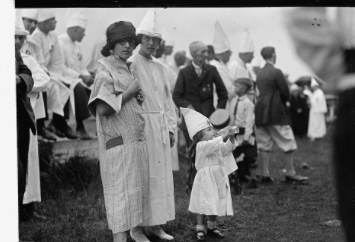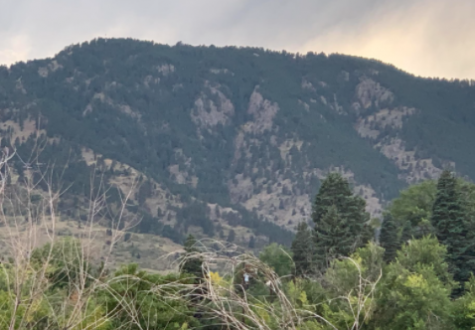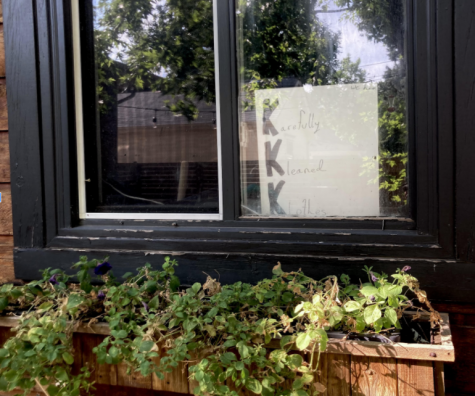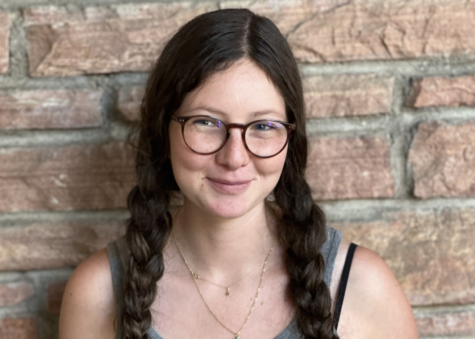When Colorado was Kolorado

KKK rallies were seen by some members as social events and would bring their families.
Boulder is known throughout the American West as an incredibly liberal city. Stories of hippies frolicking through the foothills picking herbs for Celestial Seasonings tea tend to surface in tales of Boulder’s history. The truth, however, contains a stark comparison – parades of white-hooded men marching down Pearl Street, crosses burned into the ground and the political power of the Ku Klux Klan.
Colorado’s history with the Klan is an ugly truth that is deeply interwoven with its response to the first World War. The second wave of the KKK was largely xenophobic, with its focus being anti-immigrant, anti-semitic and anti-Catholic. The anti-Blackness that founded the Klan remained part of its agenda but was slightly removed from the spotlight to encourage new memberships. The Klan also tried to prey on the insecurities of families that had been affected by the war by promoting its exclusionist values. White Coloradans were particularly drawn in by the Klan’s claims. They had just gotten back from a war on another continent and they needed a scapegoat for the brutality they witnessed and engaged in. At the time, Colorado’s immigrant population made up 16 percent of the state, meaning the Klan’s aggression against immigrants was something Coloradans could identify with.

Boulder’s involvement with the Klan remains somewhat mysterious. The local KKK chapters organized themselves mostly anonymously and there are few reports from Klansmen themselves. The Museum of Boulder’s history exhibit reported that 1 in 10 people in Boulder were part of the Klavern No. 3 of Colorado, which began in 1922. After the Klan voted themselves out of the national organization in 1925, Boulder never saw an organized Klavern again despite it rising in the 1960s in Colorado Springs and briefly in Aurora in the 1990s.
During its three year run, Klavern No. 3 had four events in which they interacted with Boulder at large. Their first public appearance was allegedly on Nov. 25, 1922, when six Klansmen (including the “Grand Kleagle,” or leader of the group) dressed in full robes to donate the equivalent of $747 and publicly endorse the Salvation Army. The City of Boulder sent them a thank you note in return, according to a Daily Camera article from Nov. 27 of that year. Later, on May 21, 1924, they attempted to burn a cross on Flagstaff, although the rain quickly put it out. According to several articles published years after the event, the Klan also burst into the basement of a local Presbyterian Church and chanted “Who took the Bible out of public schools?” claiming there was a correlation between rising theft rates and how long it had been since the Bible was read daily in school. Perhaps their most astonishing event was on Dec. 15, 1922, when the Klan held a 60 car parade down Pearl Street in full regalia with blacked-out license plates and signs reading “Join the Invisible Empire” and “Ku Klux Klan in Boulder – Watch Us Grow.”

These events were out in the open and quite understandably, they drew the public eye. However, it was the Klan’s less overt tactics that greatly increased its membership numbers. In a 2018 article in the Daily Camera, Silvia Pettem writes, “…some Boulder businesses went public in their endorsements. One dry cleaner advertised ‘Klothing Karefully Kleaned,’ while a local grocery store’s slogan was ‘Kash and Karry.’ Meetings were held north of Boulder, around today’s Lee Hill and Linden Avenue. In its members’ eyes, the meetings functioned primarily as a social event. In a post by the Denver Public Library, they describe the Klansmen’s thoughts in Grand Junction as “another Elk’s lodge, except with hoods and weird cross burning ceremonies out in the desert.” For white and protestant Americans in Colorado, the Ku Klux Klan did not resemble fear or violent racism but rather the new best club to join. Gertrude Dunning, a white woman of Catholic descent who had been in Boulder at the time, said in an interview in 2000, “[It] was exciting while it lasted. There wasn’t much else to talk about in Boulder at the time.”
Meanwhile, the KKK was gaining political power in the state senate and gubernatorial office. By 1925, Colorado elected Clarence Morley as the governor of Colorado and Benjamin Stapleton as the mayor of Denver. This led to two of the most powerful figures in the state being puppets of John Locke, the “Grand Dragon” of Colorado. Locke was the leader of all Klaverns in Colorado who had joined the KKK solely for power. He had incredible amounts of it despite never holding public office and avoiding the public eye. In 1925, the state legislature was made up of Klansmen. The majority of both parties were in the KKK and under Locke’s direction. The Klan influenced many policies that reach into the 21st century, including the redlining in Denver. While the KKK in Boulder never even made it to the classrooms, Denver took the opposite approach. Today, locations around the city and the state are named after former Klansmen, including Mayor Stapelton. Although, recently, a push to remove these names has led to the neighborhood Stapleton being renamed to Central Park.
Today, the Southern Poverty Law Center reports zero KKK organizations in Colorado. Still, the legacy of hatred left behind affects marginalized groups, a situation made worse by the lack of education on the time period. The Klan is no longer in Colorado, but its stay paved the path for hate groups and decades of a white-washed city.

Hannah (rhymes with fauna!) Cohen is ecstatic to be working on the Owl for her third and final year. She loves stories in all their forms, but she mostly has opinions on obscure podcasts and which New York Times opinion columnists are defacing the good name of journalistic analysis. When not busy with stumbling through sheet music, editing nonfiction for jGirls+ Magazine, or seeking out the cheapest bluegrass venue, Hannah enjoys wandering around the mountains with her friends and lovely labradoodle. Although she's slightly preferential to the sweeter, more robust taste of red grapes, she knows that the bliss of biting into a crunchy grape transcends color.


Amelia Chapman • Oct 2, 2020 at 2:56 pm
Wow, I had no idea the KKK had such a prominent place in Boulder’s history. I agree with the comments above that this topic should be incorporated into the classroom more.
Luke Leiden • Oct 2, 2020 at 2:21 pm
Super interesting article! I think a lot of people will appreciate getting to learn more about Boulder’s not-so-pleasant history.
Isabel • Oct 2, 2020 at 2:15 pm
This is crazy! I wish they taught this more in school. Seems like this period was completely glossed over.
Ruby • Oct 2, 2020 at 2:08 pm
This article is really eye-opening! You see the abundant amount of white people in Boulder every day and it is interesting to hear a about a time period that could explain how this trend came to be.